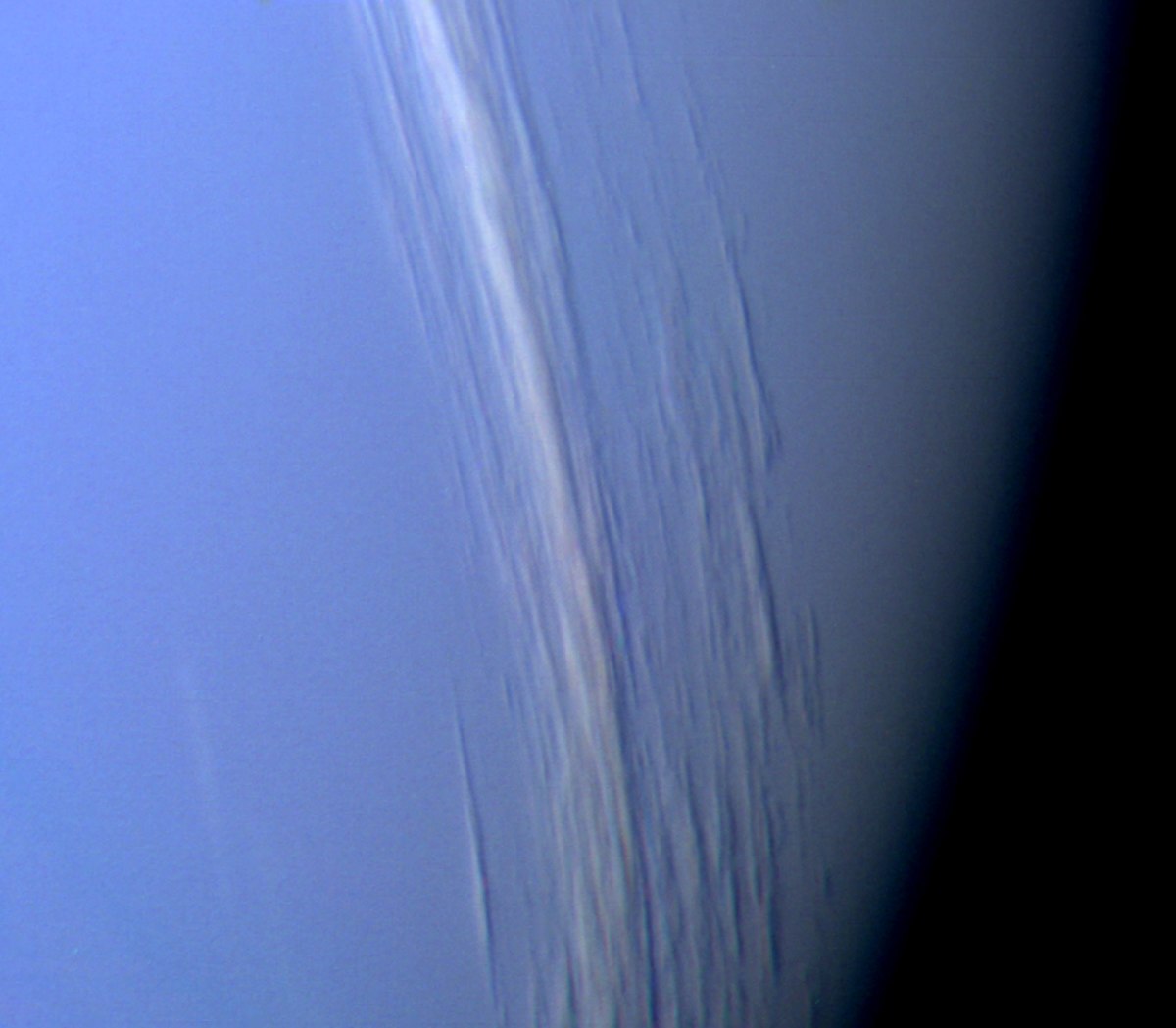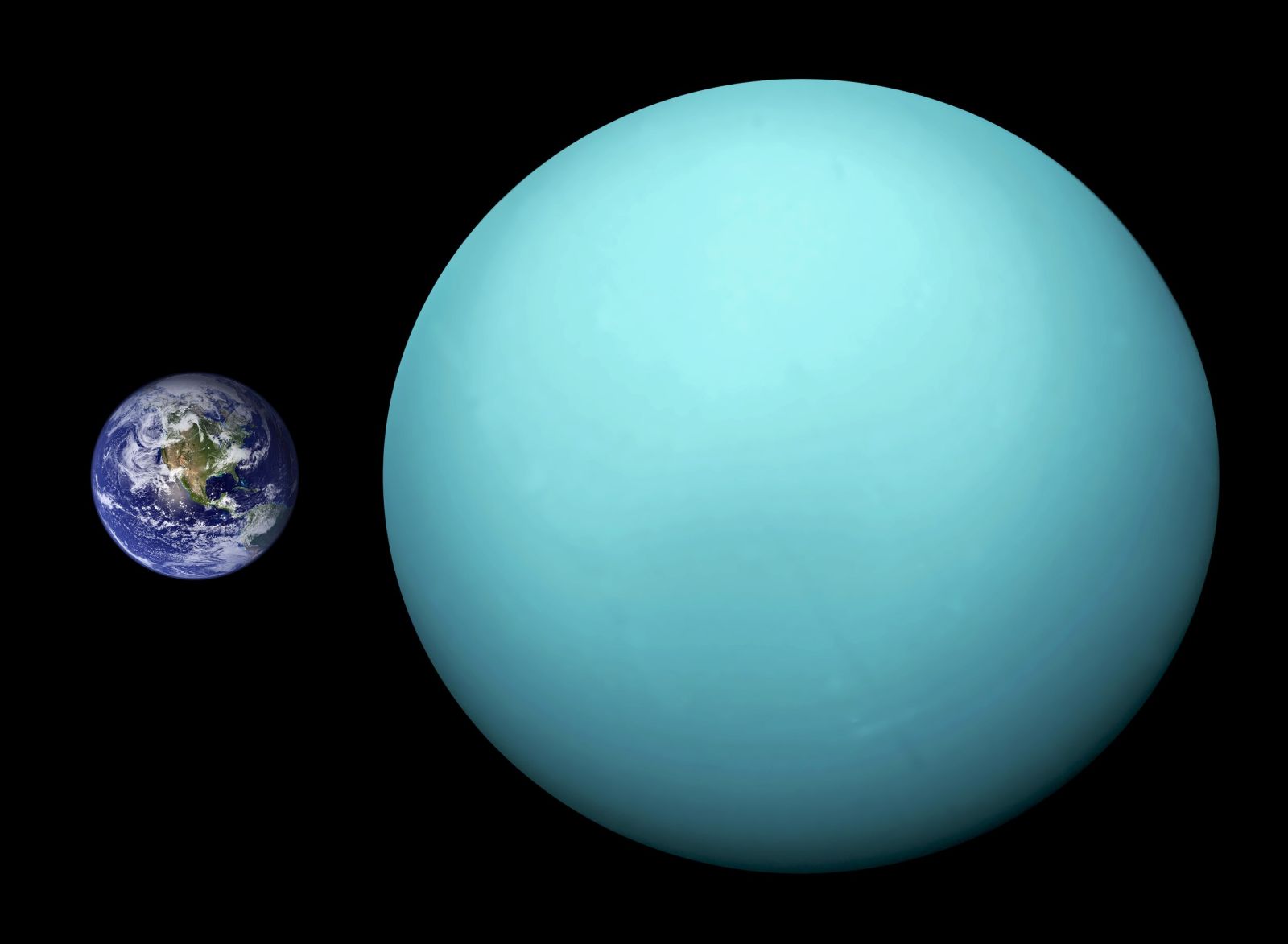Follow us on Google News (click on ☆)
These ice giants, with atmospheres still poorly understood, prove to be true laboratories of extraterrestrial meteorology. Understanding their dynamics could enhance our perspective on climatic phenomena.
Since their discovery by Voyager 2, these storms have been studied. Their rare but impressive appearances raise questions about their mechanism. Researchers suggest that methane plays a fundamental role in triggering these phenomena. This gas, though abundant, seems to have a complex impact on the atmospheric circulation of both planets.

High-altitude clouds on Neptune cast their shadows on lower ones.
On Uranus and Neptune, heat from the depths would normally lead to frequent storms. Yet, that's not the case. The answer lies in the condensation of methane, which alters heat transfer. When methane condenses, it forms droplets that fall to lower altitudes. This process, similar to the water cycle on Earth, could trap the heat, thus preventing the formation of storms.
Methane's impact is also influenced by its distribution. Researchers have developed a three-dimensional model to analyze variations of this gas in the atmosphere. This revealed vertical gradients depending on the latitude.
On Neptune, scientists have observed the presence of stable methane layers in the atmosphere. These layers act as a thermal barrier, effectively preventing heat from the planet's depths from rising to the surface. This phenomenon largely inhibits the regular formation of storms, making their occurrence much rarer and unpredictable. However, when these methane barriers break down, or under particular conditions, heat can suddenly escape, triggering sporadic and extremely powerful storms.
Conversely, the situation is different on Uranus, especially at the poles. Unlike Neptune, Uranus' poles present an insufficient amount of methane to form stable layers. This allows heat to rise more easily from the planet's interior, thereby encouraging the formation of more frequent and generally more violent storms at the poles.
This difference in the concentration and behavior of methane between the two planets explains why Uranus experiences a greater number of intense meteorological phenomena, especially at its poles, while Neptune remains relatively calm most of the time, with rarer but sometimes more impressive storms.
These discoveries offer new insight into the climatic phenomena of ice giants. Astronomers are now better equipped to anticipate these spectacular storms, though a long road remains ahead.
In summary, why do storms form on Uranus and Neptune?
The storms on Uranus and Neptune are caused by heat transfer between the planet's hot interior and its cold surface. Heat rises from the depths, and upon reaching the upper atmosphere, triggers turbulence that can lead to violent storms.
However, these storms don't form regularly due to the methane in the atmosphere of both planets. This gas can condense into droplets in the upper layers, creating a barrier that prevents heat from easily rising. On Neptune, this barrier is often stronger, inhibiting storm formation, while on Uranus, particularly at the poles, heat is more frequently able to reach the surface, resulting in more regular storms.
